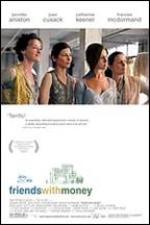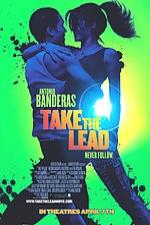
Knight at the Movies ARCHIVES


Smart writing + Smart Direction + Smart Performances = A Super Sharp Independent
and Antonio Banderas Puts on a Tux and Dances a Studio release across the finish line
and Antonio Banderas Puts on a Tux and Dances a Studio release across the finish line
I hadn’t heard of writer-director Nicole Holofcener’s first two movies, 1996 Walking and Talking and 2001’s Lovely & Amazing before
seeing her latest, Friends with Money. But after seeing it the others have immediately gone to the top of my “Must See” list.
For here is that rare curiosity: a picture that focuses on women that doesn’t involve one of them drowning her children, sleeping with
one of her junior high students, or being stalked by a deranged killer met during a moment of weakness on the internet. Nor does
Friends with Money neatly tie up loose ends, fill in back story to “explain” each and every plot point, or offer any group of ladies
quilting, making fried green tomatoes, or bonding over a pair of bell bottomed jeans.
We are far from Lifetime Television for Women “Female In Jeopardy” movies or those equally stereotypical big screen chick flicks
(though to be sure, I’m a hardcore devotee of the latter). Friends with Money blithely cuts a new path for itself – an intelligent
relationship picture centered on middle aged women that’s so close to normal life as to feel almost radical (wrinkles, minimal
makeup and all). It’s a movie that dramatizes the norm and finds the organic gentle comedy in everyday life to boot. Aside from
its superb script and direction, it’s perfectly cast and acted, and as a bonus, features new songs by the immensely gifted Rickie Lee
Jones. I haven’t quite liked a relationship picture this much since the criminally overlooked Living Out Loud – though for very
different reasons. But I fear that all this praise will mislead audiences. This is a great little movie but it’s also one in which very
little happens which may throw off attention deficient audiences. Perhaps even more disconcerting may be both its lack of
sentimentality AND cynicism. It offers small but lasting rewards – quite an accomplishment.
The ads have featured Jennifer Aniston who I have detested in romantic comedies. Here, in what seems a follow-up to her Good
Girl role, she plays Olivia, the most typical of the characters – a single former private school teacher who feels emotionally detached
after another love affair (with a married man to boot) gone bad. Her single woman ennui will feel very familiar to audiences but her
story is the picture’s most mundane (though I think it’s her best onscreen work – high praise from me). Olivia is the wild card and
youngest in a pack of friends who have apparently been so for a long time. Olivia’s chums, via their marriages, kids, and most
importantly, through their incomes, have attained a certain balance in their lives that Olivia is sorely missing.
We meet them at the outset of the picture dining at a restaurant and quickly size them up, thanks to Holofcener’s shorthand writing
and editing approach. Screenwriter Christine (Catherine Keener) and her writing partner husband David (Jason Isaacs) are modern
day versions of the Bickersons, baiting each other at every opportunity and not noticing how uncomfortable it makes the others. At
the top of the relationship and money chain are Franny (Joan Cusack) and the boyish Matt (Greg Germann) whose only problem
seems to be where to donate $2 million of their money. Feisty Jane (Frances McDormand), a successful clothing designer suggests
that Franny and Matt give the money to Olivia who is now working as a maid but this suggestion is immediately dismissed by
everyone at the table as nonsense including Jane’s effeminate husband Aaron, the British accented Aaron (Simon McBurney) and
Franny and Matt announce that the money’s going to their child’s private school quickly ending the discussion.
Money and the lack of it is the flow through line of the movie – Franny is tired of being Olivia’s financial fallback, Aaron’s eyes light
up when confronted with expensive designer clothes, David brushes aside any of Christine’s initial money worries about the towering
addition they’ve planned for their house, and Olivia goes from department store to department store getting free samples of a very
expensive skin cream – but the emotional transitions the characters are in is what propels the story. Olivia hooks up with Franny’s
trainer Mike (Scott Caan), a pint sized hulk who delivers the goods physically but is so insensitive that he demands a portion of
Olivia’s maid money when he accompanies her on her rounds.
Olivia’s tale is really the Maguffin here – all the other characters care about her and are concerned with her outcome – but WE don’t
particularly (and Holofcener’s resolve for her at the end of the picture with its little twist seems a tad forced). Olivia’s friends with
their seemingly mundane lives are actually more interesting with Jane, the explosive one, the most interesting of all. Is she really
so angry because she’s 43 and life is “like we’re waiting to die” or is it because somewhere deep inside she knows that her loving
husband Aaron is what everyone whispers behind her back? Gay.
Not even Aaron – who is pixilated by his new male “friend” the married sock designer who loves going to old movies in the
afternoon, too – seems to have a clue about what might be up ahead. Holofcener doesn’t make easy assessments or finalize
everything as the picture concludes. Again, I saw this as a breath of fresh air. Movies often claim to mirror real life but rarely ever
do. Friends with Money does and what the mirror reveals doesn’t look half bad.
+++++++++++++++++++++++++++++++++++++++++++++++++++++++++++++++++++++++++++++++++++++++++++++
Antonio Banderas, with his innate combination of grace, dignity and intensity not to mention his breathless good looks, seems an
obvious choice to take on the role of Pierre Dulaine, the ballroom dance champion who volunteered his time and talents to a group
of miscreant teens in a tough New York high school. Take the Lead, which is inspired by Dulaine’s life, follows Banderas through
the usual paces of these sophisticated mentor/aggressive student pictures: in this corner we have the teacher, the high school Henry
Higgins who represents the importance of arts, education and mostly good manners and over here we have the teenage Eliza
Doolittles, those bratty, mouthy (now trash talkin’), mixed up but desperately miserable teens looking for Guidance. Previous
examples of this type have included The Blackboard Jungle, To Sir With Love, Up the Down Staircase, and sections of Fame. The Dead
Poets Society, Dangerous Minds, and Mona Lisa Smile are variations on this theme. Take the Lead fills out the formula with hot dance
numbers. Instead of “Hot Lunch Jam” however, we get hip hop, rap and those sizzling ballroom numbers familiar to every fan of
“Dancing with the Stars.”
That Banderas, who skillfully offers the suggestion of a professional dancer, will deliver the goods is in evidence from the moment
we glimpse him astride his sensible (but uncool) bicycle, tuxedo tails flying behind him as he confidently whizzes through Manhattan
traffic. It is the most memorable thing about this formulaic but extremely enjoyable audience pleaser.
seeing her latest, Friends with Money. But after seeing it the others have immediately gone to the top of my “Must See” list.
For here is that rare curiosity: a picture that focuses on women that doesn’t involve one of them drowning her children, sleeping with
one of her junior high students, or being stalked by a deranged killer met during a moment of weakness on the internet. Nor does
Friends with Money neatly tie up loose ends, fill in back story to “explain” each and every plot point, or offer any group of ladies
quilting, making fried green tomatoes, or bonding over a pair of bell bottomed jeans.
We are far from Lifetime Television for Women “Female In Jeopardy” movies or those equally stereotypical big screen chick flicks
(though to be sure, I’m a hardcore devotee of the latter). Friends with Money blithely cuts a new path for itself – an intelligent
relationship picture centered on middle aged women that’s so close to normal life as to feel almost radical (wrinkles, minimal
makeup and all). It’s a movie that dramatizes the norm and finds the organic gentle comedy in everyday life to boot. Aside from
its superb script and direction, it’s perfectly cast and acted, and as a bonus, features new songs by the immensely gifted Rickie Lee
Jones. I haven’t quite liked a relationship picture this much since the criminally overlooked Living Out Loud – though for very
different reasons. But I fear that all this praise will mislead audiences. This is a great little movie but it’s also one in which very
little happens which may throw off attention deficient audiences. Perhaps even more disconcerting may be both its lack of
sentimentality AND cynicism. It offers small but lasting rewards – quite an accomplishment.
The ads have featured Jennifer Aniston who I have detested in romantic comedies. Here, in what seems a follow-up to her Good
Girl role, she plays Olivia, the most typical of the characters – a single former private school teacher who feels emotionally detached
after another love affair (with a married man to boot) gone bad. Her single woman ennui will feel very familiar to audiences but her
story is the picture’s most mundane (though I think it’s her best onscreen work – high praise from me). Olivia is the wild card and
youngest in a pack of friends who have apparently been so for a long time. Olivia’s chums, via their marriages, kids, and most
importantly, through their incomes, have attained a certain balance in their lives that Olivia is sorely missing.
We meet them at the outset of the picture dining at a restaurant and quickly size them up, thanks to Holofcener’s shorthand writing
and editing approach. Screenwriter Christine (Catherine Keener) and her writing partner husband David (Jason Isaacs) are modern
day versions of the Bickersons, baiting each other at every opportunity and not noticing how uncomfortable it makes the others. At
the top of the relationship and money chain are Franny (Joan Cusack) and the boyish Matt (Greg Germann) whose only problem
seems to be where to donate $2 million of their money. Feisty Jane (Frances McDormand), a successful clothing designer suggests
that Franny and Matt give the money to Olivia who is now working as a maid but this suggestion is immediately dismissed by
everyone at the table as nonsense including Jane’s effeminate husband Aaron, the British accented Aaron (Simon McBurney) and
Franny and Matt announce that the money’s going to their child’s private school quickly ending the discussion.
Money and the lack of it is the flow through line of the movie – Franny is tired of being Olivia’s financial fallback, Aaron’s eyes light
up when confronted with expensive designer clothes, David brushes aside any of Christine’s initial money worries about the towering
addition they’ve planned for their house, and Olivia goes from department store to department store getting free samples of a very
expensive skin cream – but the emotional transitions the characters are in is what propels the story. Olivia hooks up with Franny’s
trainer Mike (Scott Caan), a pint sized hulk who delivers the goods physically but is so insensitive that he demands a portion of
Olivia’s maid money when he accompanies her on her rounds.
Olivia’s tale is really the Maguffin here – all the other characters care about her and are concerned with her outcome – but WE don’t
particularly (and Holofcener’s resolve for her at the end of the picture with its little twist seems a tad forced). Olivia’s friends with
their seemingly mundane lives are actually more interesting with Jane, the explosive one, the most interesting of all. Is she really
so angry because she’s 43 and life is “like we’re waiting to die” or is it because somewhere deep inside she knows that her loving
husband Aaron is what everyone whispers behind her back? Gay.
Not even Aaron – who is pixilated by his new male “friend” the married sock designer who loves going to old movies in the
afternoon, too – seems to have a clue about what might be up ahead. Holofcener doesn’t make easy assessments or finalize
everything as the picture concludes. Again, I saw this as a breath of fresh air. Movies often claim to mirror real life but rarely ever
do. Friends with Money does and what the mirror reveals doesn’t look half bad.
+++++++++++++++++++++++++++++++++++++++++++++++++++++++++++++++++++++++++++++++++++++++++++++
Antonio Banderas, with his innate combination of grace, dignity and intensity not to mention his breathless good looks, seems an
obvious choice to take on the role of Pierre Dulaine, the ballroom dance champion who volunteered his time and talents to a group
of miscreant teens in a tough New York high school. Take the Lead, which is inspired by Dulaine’s life, follows Banderas through
the usual paces of these sophisticated mentor/aggressive student pictures: in this corner we have the teacher, the high school Henry
Higgins who represents the importance of arts, education and mostly good manners and over here we have the teenage Eliza
Doolittles, those bratty, mouthy (now trash talkin’), mixed up but desperately miserable teens looking for Guidance. Previous
examples of this type have included The Blackboard Jungle, To Sir With Love, Up the Down Staircase, and sections of Fame. The Dead
Poets Society, Dangerous Minds, and Mona Lisa Smile are variations on this theme. Take the Lead fills out the formula with hot dance
numbers. Instead of “Hot Lunch Jam” however, we get hip hop, rap and those sizzling ballroom numbers familiar to every fan of
“Dancing with the Stars.”
That Banderas, who skillfully offers the suggestion of a professional dancer, will deliver the goods is in evidence from the moment
we glimpse him astride his sensible (but uncool) bicycle, tuxedo tails flying behind him as he confidently whizzes through Manhattan
traffic. It is the most memorable thing about this formulaic but extremely enjoyable audience pleaser.
Girls on Film and Fred Astaire Goes to High School:
Friends with Money and Take the Lead
Expanded Edition of 4-5-06 Knight at the Movies/Windy City Times Column
by Richard Knight, Jr.
Friends with Money and Take the Lead
Expanded Edition of 4-5-06 Knight at the Movies/Windy City Times Column
by Richard Knight, Jr.
